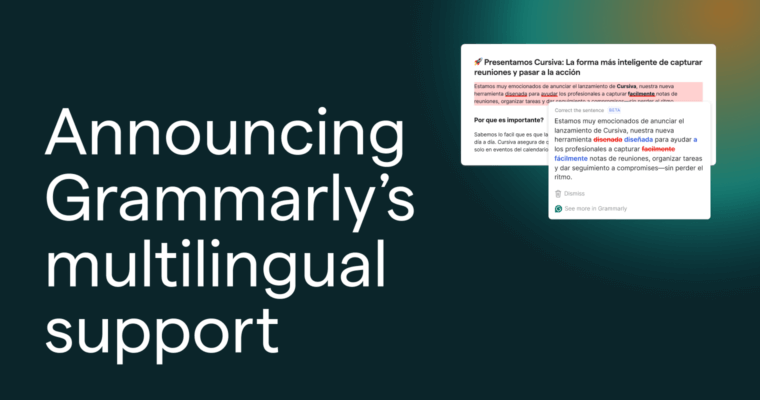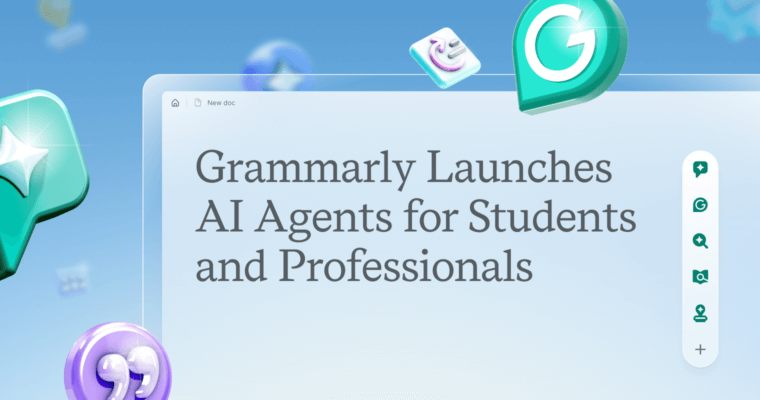
At Grammarly, we regularly talk about how responsible AI involves building and deploying AI in a way that aligns with human values. Responsible AI practices prioritize putting the power squarely in the hands of the user by ensuring that they understand how a product works and have the ability to control it. Products that foster user agency also lead to better business outcomes. Responsible AI, in its most distilled form, is ultimately about centering the user experience and ensuring that the technology you create delivers benefits and reduces harm.
Right now, AI and machine learning products can be the source of user anxiety. People are nervous about what AI means for the future of their work. A human-centric company is responsive to these concerns, meeting people where they are both in the product and the user experience. There are two levers to pull to do this: transparency and control. Combined, these principles create user agency.
How transparency builds trust
Transparency is the foundation of trust between AI systems and users. When well executed, transparency sheds light on the entire AI lifecycle, from data capture and storage to algorithmic decision-making. While transparency establishes the reliability and trustworthiness of a tool, it can be challenging to create in a way that users understand.
One important aspect of transparency is recognizing the risks and inherent biases in AI training data and its outcomes. Building AI responsibly involves intentionally addressing these biases and publicly acknowledging their existence. For instance, at Grammarly, we adopt several approaches to reduce harm and bias, and we openly share both the risks and our methods:
- We combine multiple models and strive for transparency in their construction.
- We custom-build filters to prevent biased language from reaching users.
- We implement a robust risk assessment process that evaluates the potential harm of new features before they are released.
Vendors should communicate the origins of AI models and how they make decisions. To do this successfully, the system must give the user the information they need in an easy-to-understand language and format. This can be difficult for several reasons. First, due to the nature of the technology, there is often no way of knowing why a specific decision was made by an AI model. Second, AI literacy varies widely among the public. Look for vendors navigating these challenges and striving for this level of transparency, which ultimately helps users to trust these systems and use them confidently.
Transparency also ensures accountability because it makes it possible to hold developers and systems responsible for their actions. By understanding how an AI system works, users can then easily report any issues. This also creates a path and precedent for ongoing improvement. By demystifying these processes, users are better positioned to interact with AI effectively, leading to more informed and equitable outcomes.
The role of control in user agency
Once an AI product has established how to provide transparency, it can also enable user control. From deciding when and how to use AI recommendations to having control over one’s data, user control manifests in various ways. Take, for instance, how many suggestions in Grammarly are presented. Users are informed about the basis of a suggestion (transparency!) and retain complete autonomy to accept or dismiss these suggestions (control!).
In an age where data powers AI innovation, users must retain control over their personal data. Responsible AI empowers users to decide when, how, and if their data is being used to train an AI model or optimize a product. The AI tools should enable users to make choices about their personal data that align with their preferences and values. At Grammarly, users have control over where our product works and the usage of their data.
The journey toward responsible AI requires enhancing user agency through transparency and control. Enabling users to make informed decisions about AI use ultimately makes AI use safe. For every AI system and implementation, these principles will be dynamic. When considering AI tools for your business, look for companies that are iterating, addressing feedback, and making improvements.
As the AI ecosystem evolves, people will continue to grapple with their feelings about this emerging technology. Responsible AI practices and the principles of transparency and control will help guide companies in creating leading products. People will come to rely on the products that do right by their users and, in doing so, they will lead to even better products and better business outcomes.






